 Palo Alto Stanford Heritage
Palo Alto Stanford Heritage 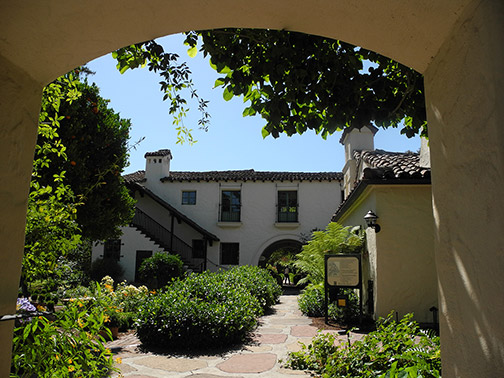
The Allied Arts Guild is on Arbor Road in Menlo Park. This beautiful property was originally part of a 32,540 acre tract called Rancho de las Pulgas* which was awarded in 1795 to Don Jose Dario Arguello by the Spanish governor of California. Arguello had been Comandante of the Presidios at San Francisco, Monterey, and Santa Barbara. In turn, his son, Don Luis Arguello. California’s first native–born governor, received title to the rancho from the Mexican government. Upon Don Luis’ death, his widow and heirs were granted title in 1835 by the U.S. Government.
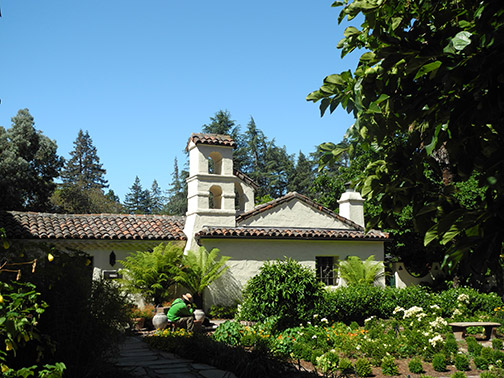 |
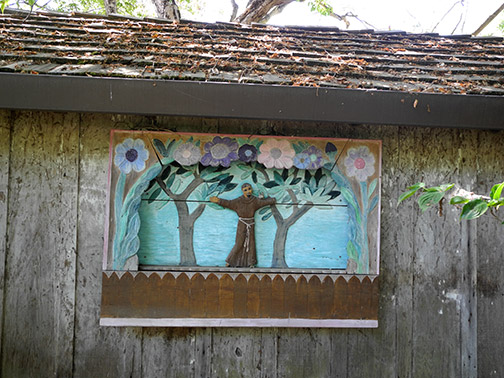 |
The origins of Rancho de las Pulgas seem exotic but pale in comparison to the romantic dream which led wealthy socialites, Delight and and Garfield Merner to purchase 3 and ½ acres of rancho land in 1928 and build a European-style craft guild there. In 1928, the Merners had met Pedro and Reta de Lemos of Palo Alto who shared their passion for travel and for European and indigenous cultures. Together, they planned a tranquil workplace for artists, where high quality objects emphasizing California peasant and folk art would be made for “cultured and appreciative people.” **
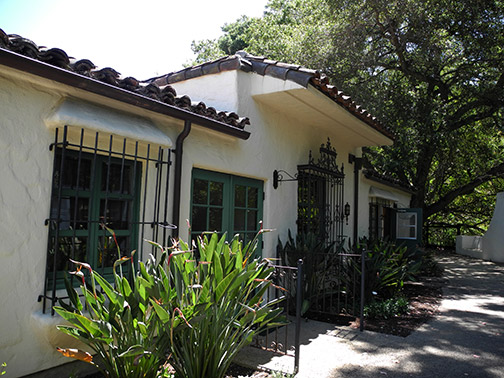 |
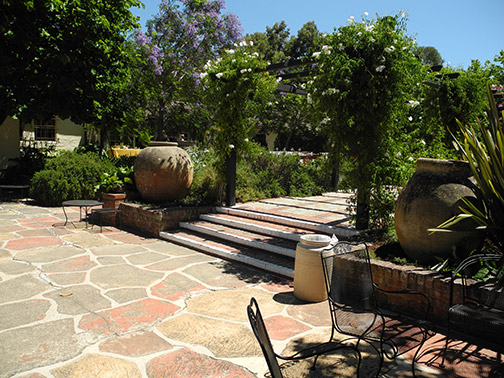 |
Between 1929 and 1932, De Lemos, together with his architect friend, Gardener Dailey, designed six Allied Arts buildings in a Spanish Colonial style. Pedro de Lemos (1882–1954) was already a significant local and national figure. Born in Austin, Nevada and educated at the California School of Fine Arts, the San Francisco Institute of Art and the University of California, he taught decorative arts at Stanford and was the director and curator of the University’s Museum and Art Galleries for 28 years. Known nationally as the editor of School Arts Magazine, de Lemos was an accomplished artist who had built 18 structures locally. Gardener Acton Dailey (1895–1967), a native Minnesotan, began his formal education at UC Berkeley, was a decorated pilot in World War I, graduated from Stanford and studied engineering and drafting at Healds Business School. He designed six grand Palo Alto houses in the Spanish Colonial Revival style, but it was his switch to Modernism in 1936 that made him one of Northern California’s most influential architects.
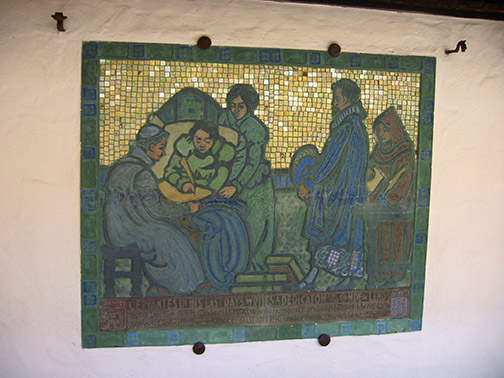 |
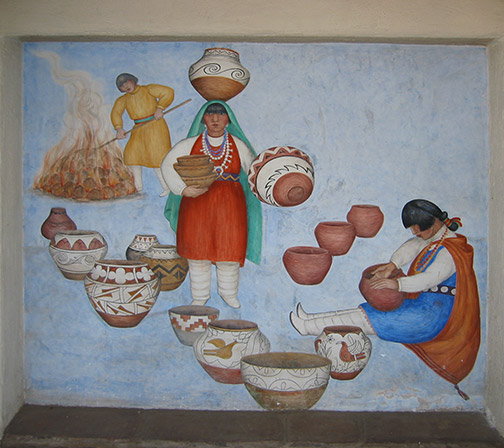 |
De Lemos, Dailey and Delight Merner were a visionary team. The original barn and sheep sheds were preserved and the new Spanish eclectic buildings were surrounded by gardens which Delight had seen in the Alhambra in Granada. The gardens—with names such as “The Court of Abundance”, “The Garden of Delight”, and “Cervantes Court”, and filled with oranges. lemons, pomegranates, roses, heliotrope and jasmine—blended with paths whose stones and pebbles were from San Francisquito Creek. Six painted murals by Maxine Albro, a disciple of Diego Rivera and tiled wall murals by the de Lemos family provided a story–book setting for the making and selling of hand-made furniture and pottery, woven fabrics and metal light fixtures. Many of the latter still hang in the Awahnee, the Palo Alto Community Center and Birge Clark houses.
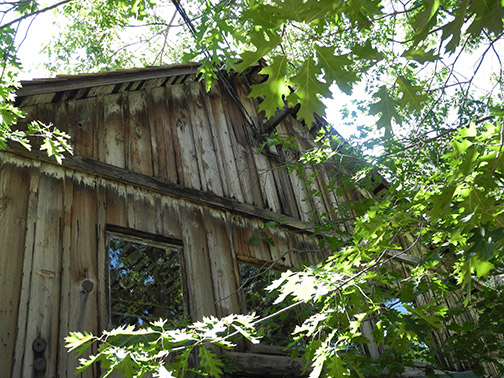 |
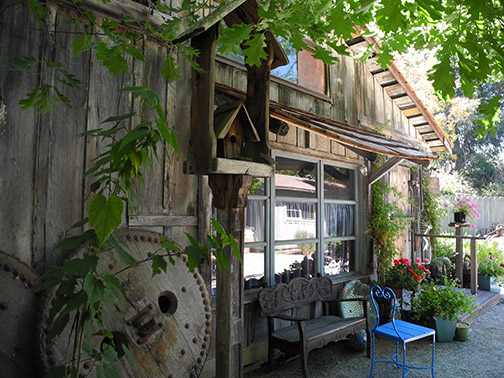 |
In 1932, the Merners combined art with philanthropy by inviting the young women from the Palo Alto Auxiliary to serve lunches to benefit Stanford’s Hospital for Convalescent Children. With no kitchen, the women prepared food at home and brought it to the Guild to serve. Lunch cost 75 cents and, on the first day, the auxiliary served 8 guests and made $6.00. Although the Merners retired from active operation of the Allied Arts Guild in 1935, the property is still run by the Auxiliary and raises approximately $100,000.00 annually to benefit Lucille Packard Children’s Hospital. A two–year renovation, begun in 2002 and costing 9 million dollars, ensured the structural and seismic safety of this architectural landmark. It also ensured the future of the Merners’ dream. ©
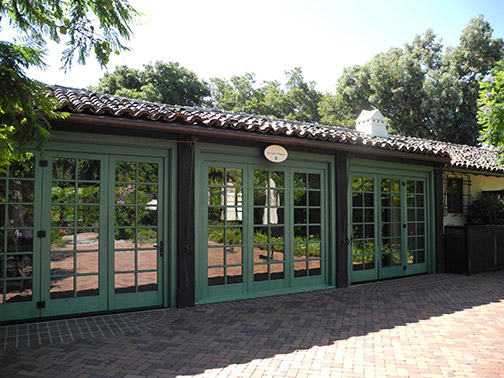 |
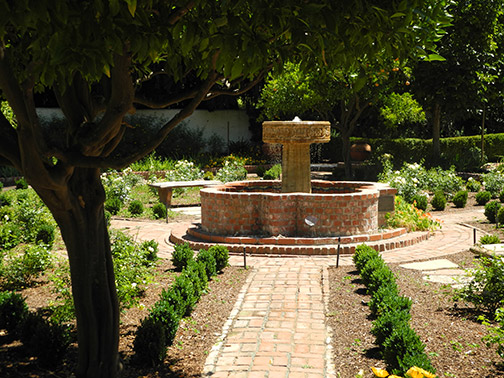 |
*The name “Rancho de las Pulgas” derives from an incident in 1769 when soldiers from the Portola Expedition fled a campsite crying, “las pulgas”, the fleas.
**Autobiography of Delight Merner.
PAST, February 8, 2013
E-mail us at either webmaster@pastheritage.org or president@pastheritage.org.
![]() Palo Alto Stanford Heritage—Dedicated to the preservation of Palo Alto's historic buildings.
Palo Alto Stanford Heritage—Dedicated to the preservation of Palo Alto's historic buildings.
Copyright © 2015 Palo Alto Stanford Heritage. All rights reserved.